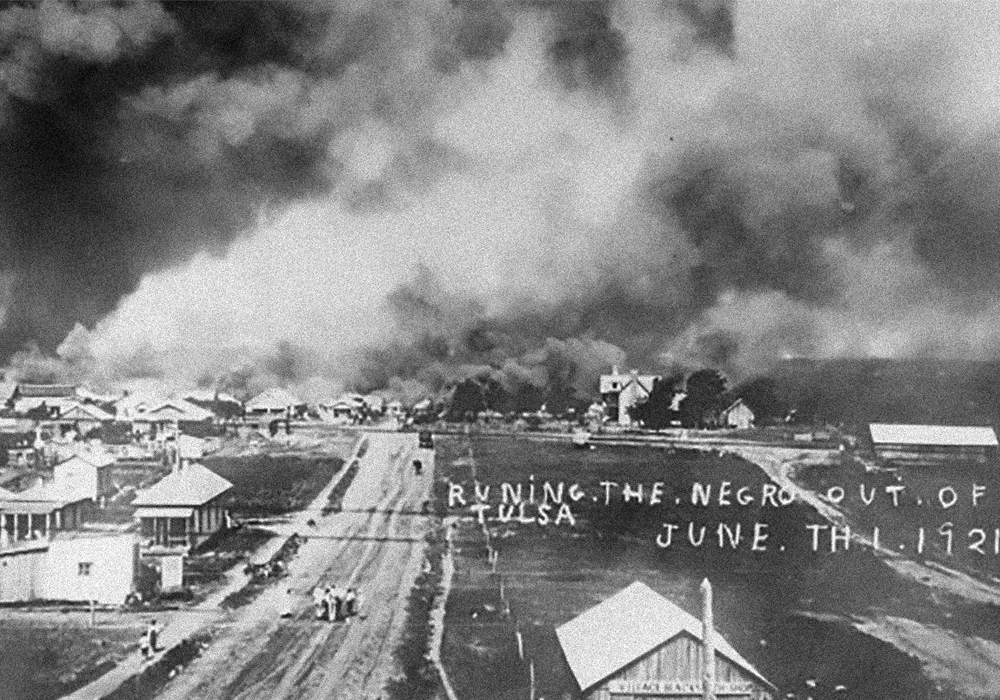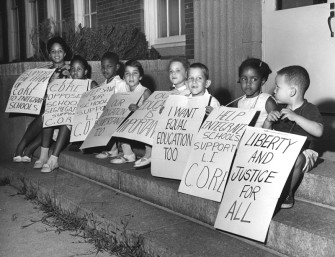After attending a presentation on the history of housing segregation and race, parent Wendy Jacobson decided to see what her son’s AP history textbook had to say on the matter. She had learned, as Richard Rothstein explains in “Our House Divided: What U.S. Schools Don’t Teach About U.S.-Style Apartheid,” that,
One of the worst examples of our historical blindness is the widespread belief that our continued residential racial segregation, North and South, is “de facto,” not the result of explicit government policy but instead the consequence of private prejudice, economic inequality, and personal choice to self-segregate. But in truth, our major metropolitan areas were segregated by government action.
Rothstein critiqued textbooks published by TCI (History Alive!), Pearson-Prentice Hall, and Holt McDougall for their passive, misleading language. One of the books states, “African Americans found themselves forced into segregated neighborhoods” with no further explanation of how this happened or how public policy was responsible.
Jacobson was dismayed to find out that her son’s Pearson textbook followed the same pattern of mythmaking. She wrote a letter to the editor at the Washington Post,
July 9, 2015
 The July 6 front-page article “A classroom battle over interpreting the Civil War” offered some hope that we may see changes to curricula on this topic. While we’re revising textbooks, let’s correct two other problems.
The July 6 front-page article “A classroom battle over interpreting the Civil War” offered some hope that we may see changes to curricula on this topic. While we’re revising textbooks, let’s correct two other problems.
The term “slaves” should be uniformly replaced with “enslaved people” so culpability for this heinous practice rests where it belongs (The Post, too, should commit to this change: language matters). And let’s stop whitewashing the federally authorized housing discrimination that was—and still is—one of the principal causes of race-based economic inequality today.
My D.C. Public Schools high schooler’s Advanced Placement U.S. history textbook [By The People: A History of the United States (AP Edition) by James W. Fraser (Pearson, 2015)] refers to purposefully segregated suburban developments such as Levittown, N.Y., as “a dream come true” and characterizes mandated housing discrimination practices as thoughtful and discretionary, in which “local officials of the Federal Housing Authority often decided that blacks were a poor risk and so denied loans to them.”
Until future generations not only know the true facts about their history but also understand how both subtle and overt distortions of those facts have built their assumptions and attitudes, we will never move forward.
Wendy B. Jacobson, Washington
We applaud Jacobson for exposing and confronting the bias in her son’s textbook and encourage others to do the same. Please send us letters you or your students write.
These textbook omissions and distortions are why the Zinn Education Project posts lessons for free access by teachers to “teach outside the textbook.” An excellent lesson on this topic is “Stealing Home: Eminent Domain, Urban Renewal, and the Loss of Community” by Linda Christensen.









I realized this 20 years ago when my son expressed shock over some topic we were discussing over the dinner table. I then read his history book which mentioned the topic in one sentence only! It was a book written by a Harvard history prof around 1935 and subsequently revived around 1955. Yes, history by omission! I then recommended Zinn’s history as a corrective. This was in a good Westchester NY high school….of the Tarrytowns which was then 40% minority.
Joanne Kantrowitz Jan. 6 at 3 p.m.
I don’t think there is widespread belief that defacto segregation is accidental and not the result of calculated policy choices. Most people understand, for example, that laws enabling charter schools funded by public money are intended to facilitate the establishment of self segregated publicly funded schools.